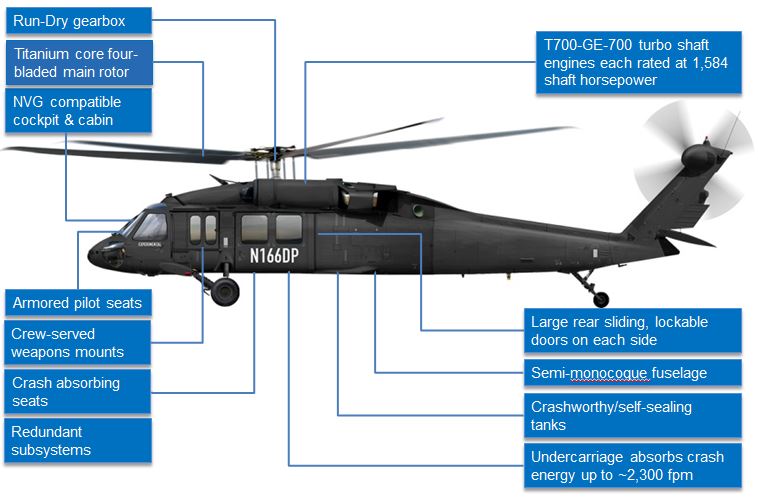Browsing Uh 60 Helicopter Rules and Conformity Needs

Regulatory Structure Introduction
The regulative framework governing UH-60 helicopter operations includes a complicated set of criteria and rules developed by air travel authorities. These policies are developed to ensure the efficient and secure procedure of UH-60 helicopters in different environments. The Federal Aeronautics Management (FAA) plays a central duty in developing and imposing these laws, which cover a wide variety of operational elements, including airworthiness requirements, pilot certifications, maintenance needs, and operational treatments.
Conformity with these policies is vital for helicopter operators to keep the greatest degrees of security and functional stability. Failure to comply with these regulations can lead to serious effects, including crashes, injuries, and regulative assents. As a result, helicopter drivers need to remain educated regarding the current governing developments and make sure that their operations are in complete compliance with all suitable rules and requirements.
Airworthiness Inspections and regulations
Among the regulatory framework governing UH-60 helicopter procedures, a vital focus lies on compliance with Airworthiness Directives and carrying out complete examinations to promote safety and security standards and functional integrity. Airworthiness Directives (ADs) are provided by aviation authorities to deal with risky conditions in aircraft, including the UH-60 helicopter, and required particular activities to be taken by operators or owners. Compliance with ADs is necessary, and failure to stick to these instructions can cause significant repercussions, including grounding of the aircraft.
Regular examinations are vital to ensuring the airworthiness of UH-60 helicopters. By sticking to a stringent examination program, drivers can spot and resolve prospective concerns promptly, consequently enhancing the security and integrity of UH-60 helicopter operations.
Pilot Certifications and Training

Pilot training for UH-60 helicopters is extensive and covers a large range of topics, consisting of airplane systems, emergency treatments, navigation, and mission-specific training. In addition, pilots go through simulator training to exercise different emergency situation situations in a regulated environment. This training aids pilots develop the essential abilities to deal with tough circumstances properly.


Additionally, ongoing training and professional growth are crucial for UH-60 pilots to remain present with the current policies, technology, and best techniques. By purchasing pilot certifications and training, operators can boost safety and security, enhance performance, and make certain conformity with regulative needs in the procedure of UH-60 helicopters.
Operational Limitations and Requirements
Pilot credentials and training work as the foundation for recognizing the functional limitations and needs connected with UH-60 helicopter operations (uh 60). These functional limitations are placed in location to ensure the safety and security of the team, passengers, and the airplane itself. Operational constraints may include aspects such as weather condition problems, weight limitations, elevation restrictions, and operational limits. It is essential for pilots to be fluent in these restrictions to make enlightened decisions throughout flight procedures. Additionally, conformity requirements, such as sticking to look these up specific flight paths, interaction methods, and emergency situation procedures, are important for preserving functional safety and security and governing compliance. Pilots need to remain existing with all functional constraints and needs via routine training, instructions, and evaluates to reduce dangers and make sure risk-free and effective UH-60 helicopter procedures. By focusing on adherence to these operational guidelines, pilots can improve the general safety and efficiency of their basics missions while promoting regulatory standards.
Emergency Procedures and Compliance Testing
Effective emergency situation treatments and thorough conformity screening are crucial elements of maintaining operational safety and security and governing adherence in UH-60 helicopter procedures. Emergency procedures encompass methods for numerous situations, including engine failures, fires, hydraulic concerns, and much more. Pilots and crew participants have to be fluent in these treatments to react promptly and properly in emergency situations. Routine compliance screening makes sure that the helicopter meets all regulative requirements established forth by aeronautics authorities. This testing involves thorough examinations, checks, and examinations to verify that the airplane is airworthy and in conformity with all appropriate laws.
Conformity testing likewise includes devices onboard the UH-60, such as interaction systems, navigation tools, and safety gear. Making certain that all tools is working appropriately and meets read the article regulative criteria is vital for secure operations. Furthermore, conformity screening may include simulations of emergency situation scenarios to examine the team's feedback and the helicopter's performance under anxiety. By focusing on emergency procedures and conformity screening, UH-60 drivers can mitigate dangers and show their dedication to safety and security and regulatory compliance.
Final Thought
Finally, adherence to regulative structure, compliance with airworthiness instructions, pilot credentials and training, functional constraints, and emergency situation treatments are essential for navigating the regulations and requirements of operating a UH-60 helicopter. uh 60. It is essential for operators to prioritize safety and ensure full conformity with all relevant laws to keep the airworthiness and functional stability of the aircraft
Navigating the regulatory landscape bordering UH-60 helicopter procedures demands a nuanced understanding of the elaborate web of rules and conformity needs.Conformity with these policies is important for helicopter operators to keep the highest possible levels of safety and functional stability.In the middle of the regulatory structure controling UH-60 helicopter operations, a vital focus exists on conformity with Airworthiness Directives and carrying out complete assessments to support safety criteria and operational reliability.Efficient emergency treatments and complete compliance screening are vital components of keeping operational safety and security and regulative adherence in UH-60 helicopter procedures. Routine compliance screening ensures that the helicopter satisfies all regulatory demands set forth by aeronautics authorities.